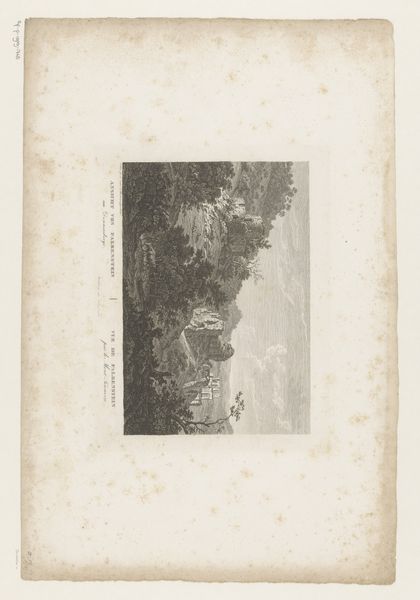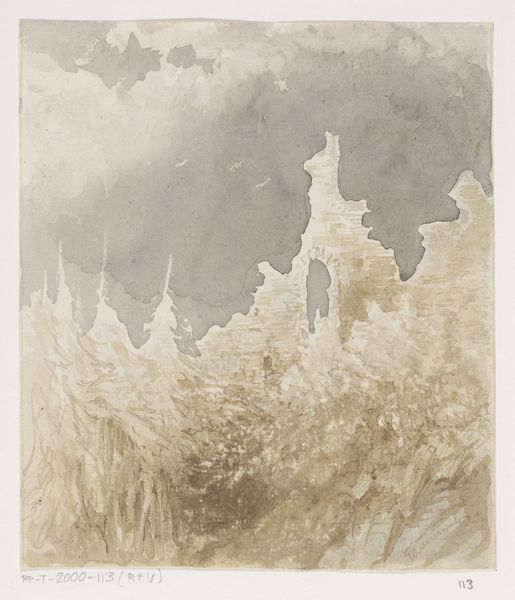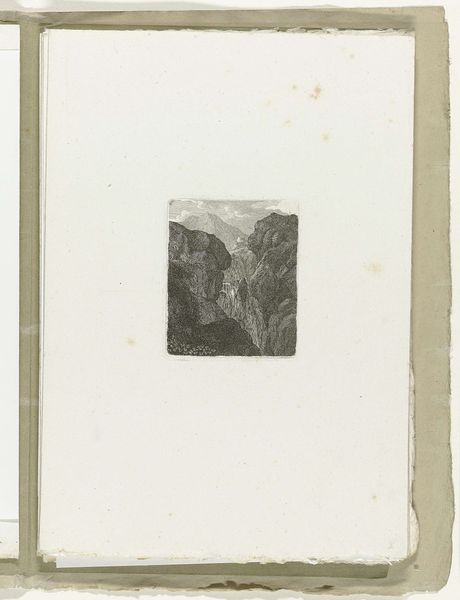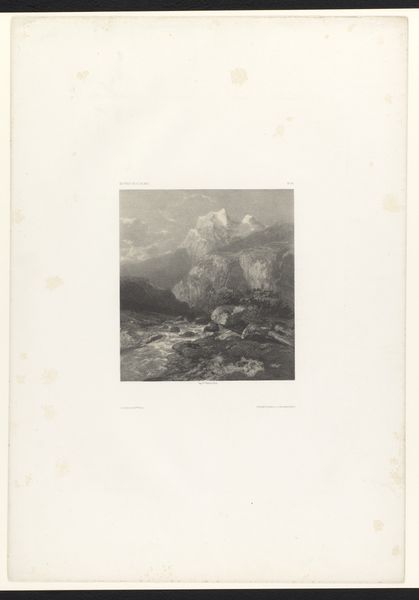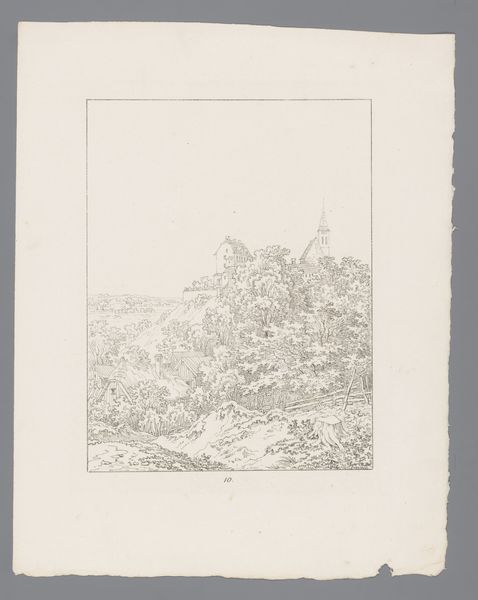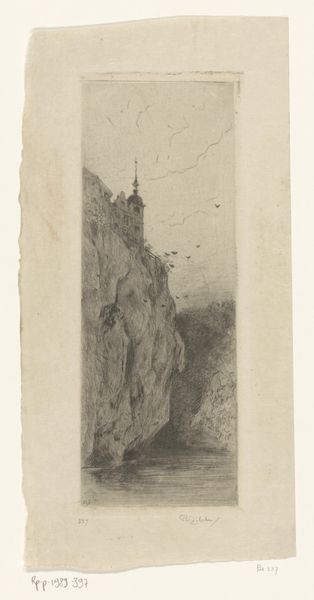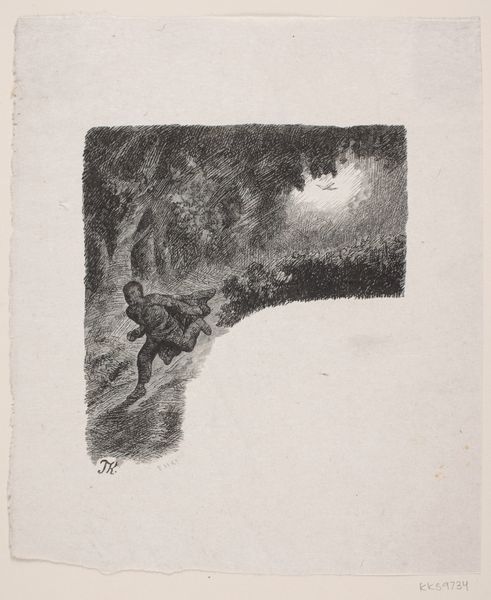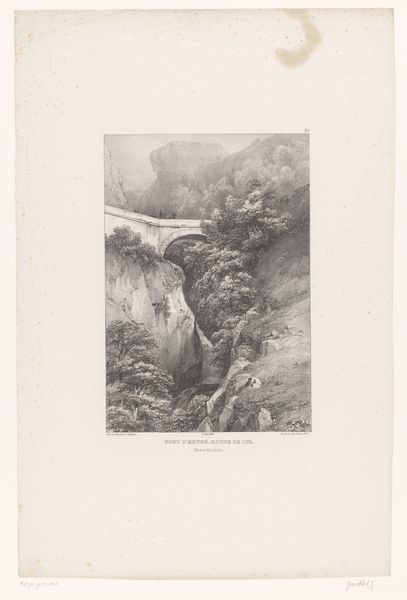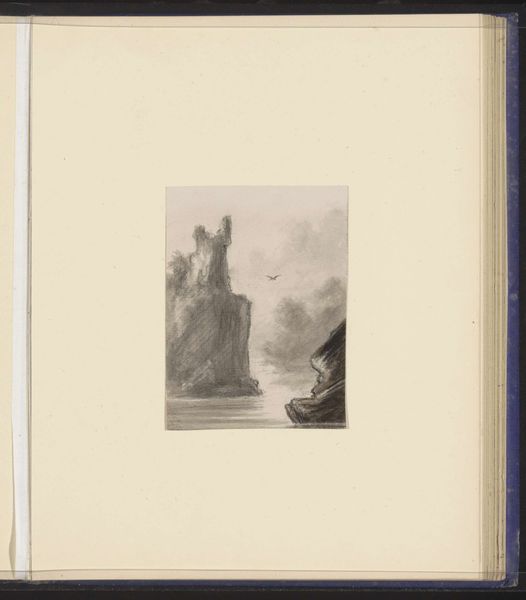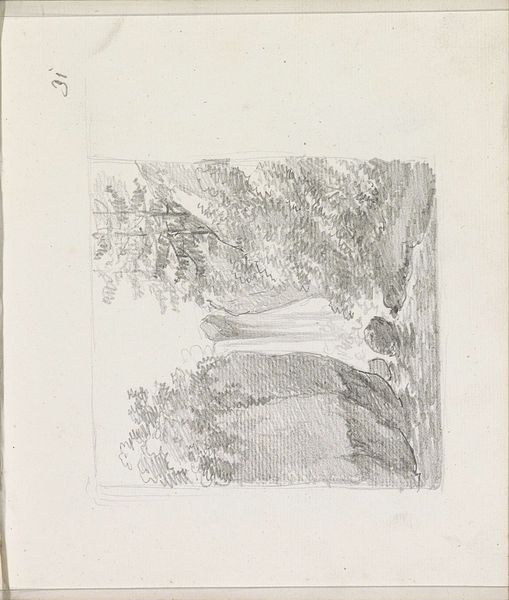
Bergbeek gezien tegen het egale grijs van een bergrug 1750 - 1809
0:00
0:00
Dimensions: height 301 mm, width 163 mm
Copyright: Rijks Museum: Open Domain
Curator: This delicate pencil drawing captures a mountain stream cascading against the muted backdrop of a grey mountain ridge. David Alphonse de Sandoz-Rollin created "Bergbeek gezien tegen het egale grijs van een bergrug"—which translates to "Mountain Stream Seen Against the Flat Grey of a Mountain Ridge"—sometime between 1750 and 1809. It's quite remarkable. Editor: A grey on grey daydream. The soft pencils sketch an image of raw energy in slow motion, but there's this overall calm about it...it's an interesting emotional contrast, actually. Curator: The use of a monochromatic palette emphasizes the interplay of light and shadow, truly characteristic of Romanticism’s focus on dramatic natural scenes. It presents nature as an awe-inspiring, almost spiritual entity, quite separate from any human construct. Editor: That sense of Romantic grandeur, the sublime... it’s there, definitely. But I also find a tenderness here. See the careful detail around the waterfall versus the more gestural peak above it? Almost like the artist paused longer near the life-giving water. Curator: The artist's careful observations reflected the Romantic era fascination with natural landscapes, viewing them as sources of sublime beauty and spiritual renewal. You find that artists sought out wild and untamed scenery to evoke powerful emotional responses. The location itself could have had particular meaning. Editor: It’s interesting you mention meaning. Given the historical context, I'm also wondering if the greyscale, though a product of the medium, contributes to a sense of socio-political uncertainty during a tumultuous era. Could this muted palette indirectly comment on societal unease or a yearning for simpler times? Curator: Possibly, though more directly, its public function, like many landscape works of the time, lies more simply in fueling patriotic sentiments towards national regions and romanticizing certain vistas for visitors who purchase art and cultural objects. Editor: You are absolutely right; both interpretations are interesting possibilities, enriching our experience. Ultimately, though, it's an invitation to step into this landscape, a meditative moment carved from pencil on paper, a world unto itself. Curator: Precisely! It makes you think about the layers within art and the varying conversations that evolve around them over the years.
Comments
No comments
Be the first to comment and join the conversation on the ultimate creative platform.

